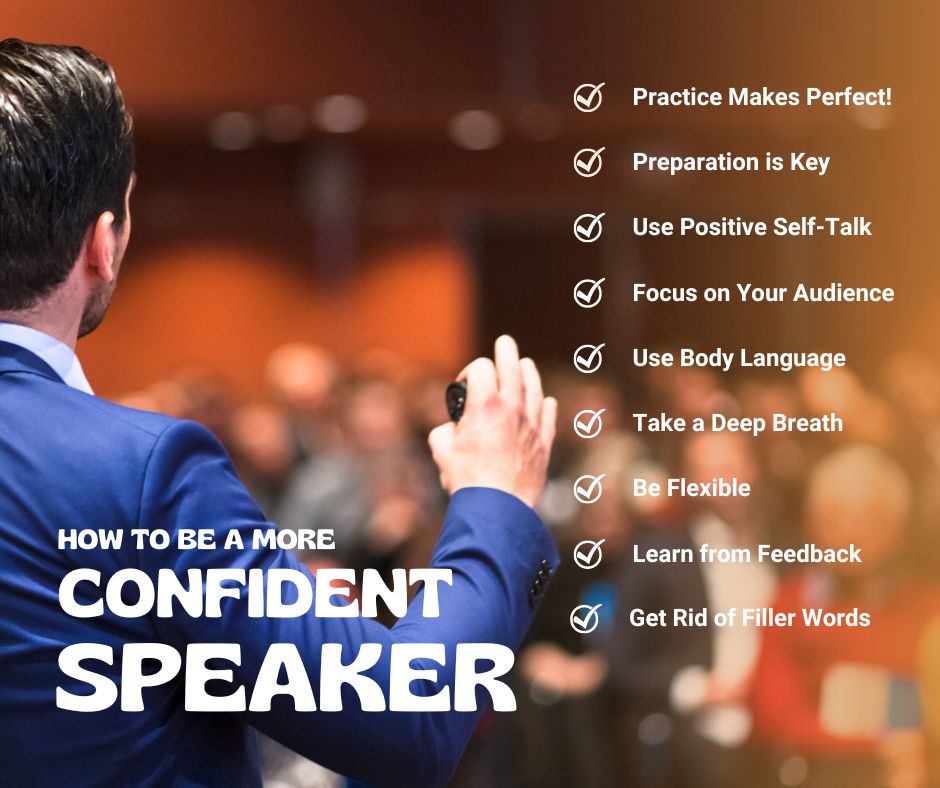How To Be More Confident In Speaking

Struggling to command attention when you speak? Millions share your fear, but proven strategies can transform your public speaking from daunting to dynamic.
This article provides actionable techniques to boost your confidence and improve your delivery, helping you captivate your audience and make a lasting impact.
Understand Your Anxiety
Glossophobia, or the fear of public speaking, affects an estimated 77% of the population, according to the National Institute of Mental Health.
Recognizing this fear is the first step.
Rather than viewing anxiety as a threat, acknowledge it as nervous energy you can channel.
Preparation is Key
Thorough preparation drastically reduces anxiety. Start by knowing your material inside and out.
Create detailed outlines rather than scripts to maintain a natural tone.
According to a study by Toastmasters International, rehearsing your speech at least five times significantly improves audience perception.
Practice Techniques
Record yourself speaking and identify areas for improvement.
Practice in front of friends or family for constructive feedback.
Simulate the speaking environment to acclimate yourself to the setting.
Master Your Body Language
Nonverbal communication is crucial. Stand tall, make eye contact, and use purposeful gestures.
Maintain a relaxed posture to project confidence.
According to Harvard Business Review, speakers perceived as confident make direct eye contact 80% of the time.
Control Nervous Habits
Be mindful of fidgeting, pacing, or excessive use of filler words like "um" or "uh."
Pause strategically to gather your thoughts and add emphasis.
Practice mindful breathing exercises to calm your nerves before speaking.
Engage Your Audience
Connect with your audience by telling stories and asking questions.
Tailor your message to resonate with their interests and needs.
Dale Carnegie, author of How to Win Friends and Influence People, emphasized the importance of genuinely connecting with your audience.
Use Visual Aids Effectively
Visual aids can enhance your presentation, but use them sparingly.
Ensure visuals are clear, concise, and relevant to your message.
Avoid reading directly from your slides.
Embrace Imperfection
Everyone makes mistakes. Don't let a minor stumble derail your entire presentation.
Acknowledge it, correct it if necessary, and move on.
Authenticity resonates more with audiences than striving for flawless perfection.
Seek Opportunities to Speak
The more you speak, the more comfortable you will become.
Volunteer to present at meetings, join a public speaking club like Toastmasters, or take a public speaking course.
Consistent practice builds confidence and hones your skills.
What's Next?
Implement these strategies immediately to transform your public speaking abilities.
Consider joining a local public speaking group or seeking professional coaching for personalized guidance.
Ongoing practice and self-reflection are essential for continued improvement.


















